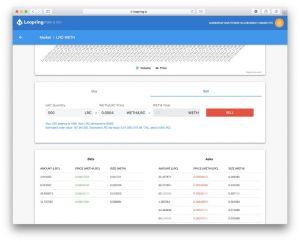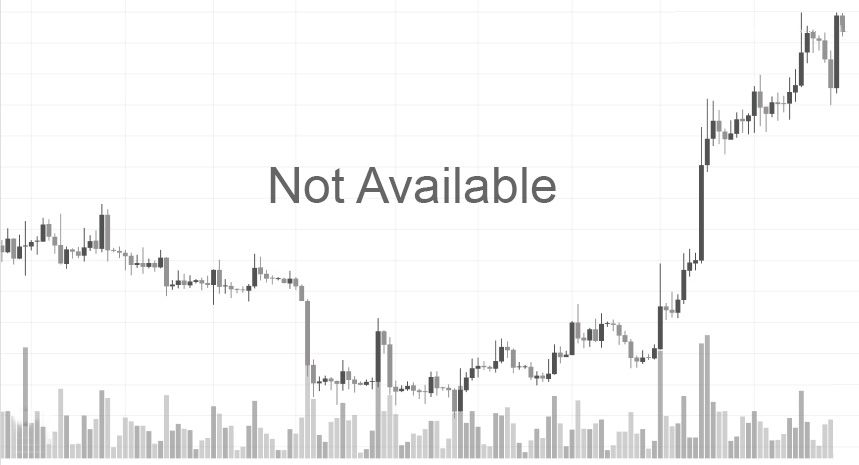The Loopring platform is built around the open protocol which aims to streamline building of decentralized exchanges and facilitate easy exchange of assets among as many of these platforms as possible.

What is Loopring?
Loopring technology was developed in parallel with the growing use of tokenized and other assets which now exist on the blockchain. After its creators abandoned the idea of creating a centralized exchange back in 2014, they started working on Loopring – the idea was to come with the platform which is supposed to solve at least some of the numerous issues faced by trading platforms such as centralized and decentralized exchanges.
First, the centralized exchanges are identified as lacking in the following areas which Loopring wants to improve:
- Security. Since the customers usually leave their private keys in the hands of centralized exchange authorities, one can say that their crypto assets face the risks of compromised security. The results are frequent and well-documented hacking attacks against the servers which store funds whose amounts often reach millions of US dollars. Loopring aims to return the control over assets to the traders by removing the need to face risks by having them deposited to centralized exchanges.
- Transparency. The use of centralized exchanges also exposes the customers to the risks relating to transparency. Not every exchange can be expected to act honestly with regard to potential shutdowns, asset freezes, bankruptcy etc. Even more, the exchanges may be even less transparent when it comes to using one’s assets for lending them out to unauthorized parties while they are in custody. Loopring is attempting to resolve these issues by removing the custody from the equation altogether: it removes the need for the users to send their tokens to an exchange-based wallet for custody. With Loopring, the tokens will stay with the user’s blockchain address while the trading and transactions are being processed. Tokens always remain in users’ blockchain addresses during the entire trading/transaction life cycle. Loopring will also prevent situations in which the users are locked out of their assets by allowing them to transfer tokens once the orders have already been submitted and handling the automatic adjustments of order amounts during settlements.
- Liquidity. Divided liquidity in case of centralized exchanges makes it harder for having new exchanges enter this market. Exchanges with the highest number of trading pairs will have an easier time doing business, since the users will pick them out among the competitors as they allow for a broader range of transactions on a single platform. The exchanges with larger order books are also favored because of bid-ask spreads for the offered trading pairs. Loopring plans to stimulate competition and disrupt the existing market share division by being an open source solution favoring wider participation. It allows any entity to become an independent decentralized exchange with the help of Loopring software, as well as use an option to join the DEX network for sharing one’s liquidity with other participants.
How Does Loopring Work?
In addition to its exchange protocol, the Loopring platform features the automated execution system which runs on Ethereum and allows for the cross-exchange trading of various assets. First, Loopring will perform pooling of orders which are received on its platform. This is followed by communicating these orders off-chain via order books belonging to various exchanges. At the same time, the free Loopring protocol allows decentralized applications to implement exchange functions.
Both decentralized and centralized exchanges can use Loopring platform, allowing them to create liquidity across as many exchanges as possible. At the same time, investors can get access to a wide range of prices in the market and pick out what they consider most suitable for them. Loopring is seen as an “agnostic†platform when it comes to the blockchain, which means that it can be easily integrated with other platforms which use smart contract technology.
Loopring itself is built on the sets of smart contracts which perform various tasks:
- Mix-Matched Contracts are used to manage the status of orders in the loop, monitor volume and prices and ensure interaction with other smart contracts;
- Order Contracts are used to maintain order databases and cancellations;
- Registration Contracts manage services for exchanges that implement the Loopring platform and token deposits;
- Stats Contracts are used to determine prices between token pairs and exchange volumes.

How Can One Trade with Loopring?
For starters, users who want to start working with Loopring are fully exempted from having to place deposit funds into an exchange, which is sometimes required even by decentralized exchanges. In this sense, Loopring will function similarly to debit account transactions, with transaction authorizations taking place prior to the final settlement which is handled subsequently. Based on this, the trading is done in the following manner:
a) Users initiate trading by placing their order via a Loopring wallet.
b) Users sign with their private wallet key which is bound to one’s wallet address. It is important to stress that this does mean that the user’s funds will be transferred by this act. The reason for this is the fact that Loopring operates only as an “interface†for managing one’s funds stored in the wallet, in the manner similar to what websites or apps do when offering insights into one’s bank account.
c) Placed order is communicated to the smart contracts which are created on the platform which support them (such as Ethereum, Qtum, NEO and others). Orders are also forwarded to off-chain relay nodes and matched in the best possible manner, as part of Loopring’s “order-matching-as-a-service†system. Once this is done, the orders are confirmed and prepared for execution.
d) With the help of smart contracts, the funds in wallets are exchanged for the preferred currency units one wants to trade with. At the same time, the order book is managed by the off-chain nodes and its status is broadcast to ring miners.
Who Are Ring-Miners?
Ring-Miners play an essential role in the Loopring ecosystem. Their activities center on executing (or partially executing at the very least) orders with the help of order rings in exchange for rewards. These compensations have two basic formats:
- Fees based on the platform’s Loopring (LRC) token. In this case, the user who creates an order sets the maximum amount of LRC tokens which are to be paid to the miner in form of a fee.
- Split-margins subtracted from the final amount of a particular order. While placing an order, the user can also determine the percentage of the margin that can be claimed for a specific order, leaving the choice between fees or margins to the miners themselves.
The existing system is designed to help the miners get adequate compensation for the services they provide – it is based on the incentive for them to look for the best exchange rate deals which can help them get better split-margins for themselves. Finding best trading deals is also a guarantee that the users will get the most value for their traded cryptocurrencies, making it a potential win-win for both parties in the process.
Loopring’s Order Ring and Order Sharing Technologies
To make this process run smoothly, it was necessary for the Loopring team to implement two important technologies that run in the background:
- Order Rings. The ring matching process involves grouping transactions into “rings†which enable instant transactions between multiple users of the Loopring protocol and the currencies they use. Order rings are mainly dedicated to managing the matching process in the most satisfying manner for all parties involved. This is what separates Loopring from regular exchanges, as the number of parties involved in the order matching “ring†is not limited to two. Order rings also handle the grouping of otherwise unrelated orders in the manner which is helpful for their simultaneous execution. After a miner gets the job done with an order ring, the smart contract system checks if the orders can be executed to the benefit of both parties and the traded coins are transferred wallet-to-wallet as part of the atomic swap.
- Order Sharing. If the order matching process on the Loopring platform can be said to resemble the production line, order sharing can be compared to a work procedure that is supposed to increase its efficiency. As the orders are placed down the production line, the miners can attempt to fill them all by themselves as part of a single trade – if that is not possible, the order sharing allows them to “break†the order into smaller units and pass it further down the line until it is ultimately filled. This means that they will be simply assigned to the next order ring until they are fully processed.
Loopring Tokens
The fact that Loopring is blockchain-agnostic means that each chain it integrates with leads to the creation of new tokens. Their existence is supposed to ease the handling of decentralized trading operations between tokens on various blockchains. The platform sometimes uses the designation of “LRx†for these new tokens, with “x†denoting the blockchain which actually hosts them. As of January 2019, implemented or planned Loopring tokens used on this platform are the following:
- LRC is the ERC-20 token running on Ethereum. It is the main token on the platform which was initially distributed as part of an ICO which took place in August 2017. The offering managed to raise some $45,000,0000 worth of ETH, a portion of which was given back to the investors from the project’s native China. Mining LRC is done in the manner similar to Proof-of-Work approach in which the verification and processing of trades carry rewards in form of LRC-based fees or split-margins. As of January 2018, there were 788,984,491 LRC tokens in circulation out of the planned supply of 1,374,955,752 units. In the same month, the currency’s market cap stood at just above USD 60 million. Its historic high was reached in January 2018, when it had the market cap of more than USD 1 billion. LRC tokens are readily available for trade on cryptocurrency exchanges such as Binance and Bittrex and others. Acquired tokens can be stored in any ERC20-compatible wallet in addition to the official one. In order to improve the value of LRC and increase its scarcity on the Loopring network, the team recently introduced the LRC Burn Rate mechanism which ensures that wallets and miners who earn fees by completing tasks on the platform will have a portion of their fees converted into LRC (if they are not LRC already) and burned. The token also went live on Wanchain in December 2018.
- LRN is the Loopring token residing on NEO blockchain. It was distributed to LRC owners as part of several airdrops taking place between July and November 2018.
- LRQ is the planned Loopring token to be hosted on Qtum. As of January 2019, the tokens have not yet been released, but it is expected that the procedure will follow the same timeline and approach as those used with the LRN.

Loopring Team and Competition
The founder and CEO of Loopring is Daniel Wang who had previously established a centralized exchange Coin Port back in 2014. Unhappy with the potential offered by the centralized model, he started working on the Loopring platform with his team, which, among others, includes Jay Zhou (CMO) and Johnston Chen (COO) who gathered experience while working for well-known companies such as Ernst & Young and 3NOD.
Loopring project also includes the Loopring Ecosystem Advancement Fund (LEAF) which was established to provide rewards for contributors to the project and support investments in blockchain technologies.
One can say that, at first sight, Loopring faces strong competitors with the likes of Kyber Network or 0x. Yet, the team claims that these platforms are designed for different use cases. Unlike Kyber’s market-making protocol which offers liquidity at set prices within a defined timeframe, Loopring focuses on its ring order and ring matching technologies to power its third-party matching-as-a-service (MAAS) system.
Similar can be said of 0x which sources its liquidity from the exchanges existing on its platform, unlike Loopring with which the same is done with just about any exchange that is connected to its network.
